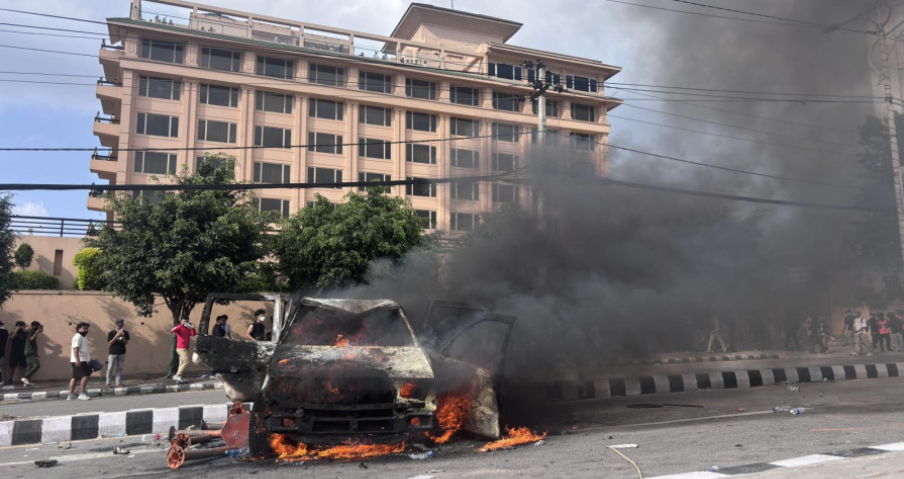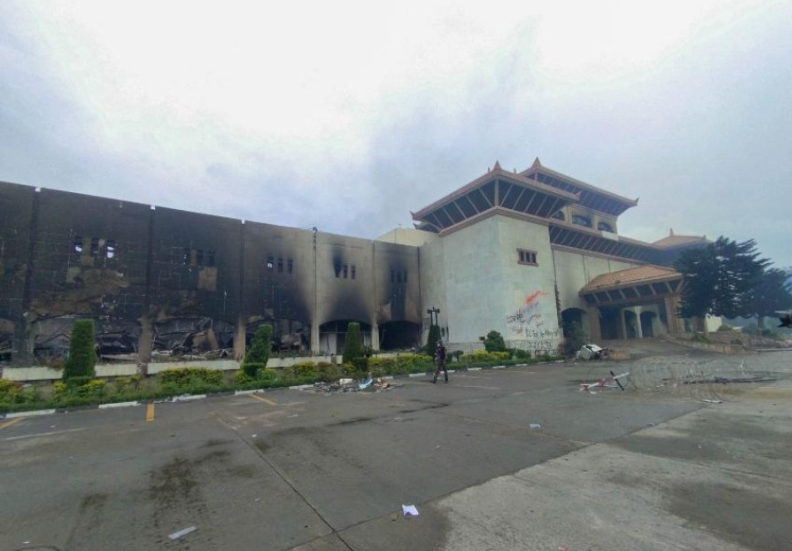After the violent Gen Z protests of September 8-9, hundreds of public and private buildings in Kathmandu and elsewhere suffered severe fire and arson damage. Nepal’s Department of Urban Development and Building Construction, in collaboration with the Nepal Engineers’ Association, has launched a rapid assessment to identify buildings that remain usable, require repairs, or must be demolished.
Rapid structural damage assessment of fire-hit public buildings in Kathmandu
Soon after the arson in Singha Durbar and around other central government complexes, engineering teams formed 20 separate assessment groups. The teams include officials from the Urban Department and volunteer engineers under the Nepal Engineers’ Association. They visited over 160 burnt buildings to inspect damage to key structures like the Ministry of Health and Population, Kathmandu District Court, Prime Minister’s Office, Supreme Court, and many others.

Their first task is to attach red or yellow stickers: red indicating the structure is not safe to enter, and yellow meaning something in between perhaps usable after repair or retrofitting. Buildings given red stickers are currently uninhabitable until engineers decide whether repair is possible.
How fires weaken concrete and building safety in heat damage
Engineers warn that fire damage looks worse than what appears at first glance. Heat from fires, especially temperatures between 100 °C and 400 °C, dries out concrete and destroys the moisture that helps bind bricks, cement, and steel reinforcements rods. In places where the fire burned hotter, even the chemical composition of the cement can change, weakening its strength.
A building that seems solid may collapse in an earthquake or even under its weight, especially in parts that burned intensely.
Buildings That are Safe and Need to be Repaire
So far, the engineering teams found that many buildings in Singha Durbar about half suffered heavy damage. Others, especially where wires, vehicles, documents, and furniture suffered loss, have red stickers and are unsafe to inhabit.

Visual inspections declared four major government buildings the Supreme Court, Kathmandu District Court, Department of Standards and Metrology, and Nepal Bar Association building unfit for immediate use. Detailed structural tests will determine whether repairs are possible
Local community efforts and how service disruption is being managed
Ward offices that lost infrastructure are operating from temporary locations; for instance, some are using rooms still intact or renting nearby buildings. Local volunteers helped clear debris, restore electricity or internet where possible, and salvage usable items.
Despite disruptions to administrative services, officials are working to resume essential operations such as document processing, citizenship registration, revenue collection, and legal services by relocating to alternative worksites.

